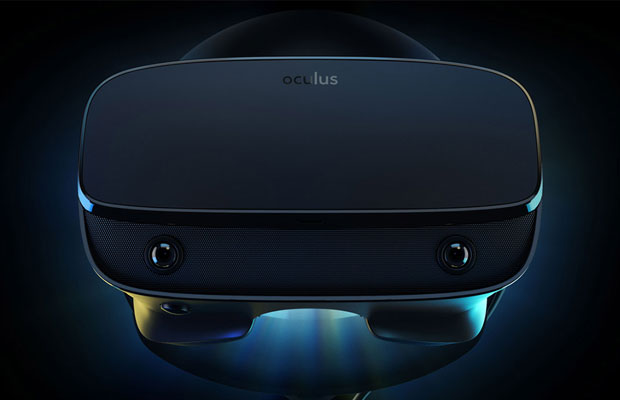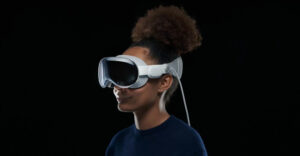Facebook on Wednesday unveiled its Oculus Rift S virtual reality headset at the Game Developers Conference in San Francisco.
It will be available this spring for US$399.
The Rift 2 is “not a full redesign, but we are constantly iterating on products and prototypes,” a Facebook spokesperson said in comments provided to TechNewsWorld by Oculus VR Product Comms Lead Andrea Schubert.
With the Rift 2, Oculus “is following some of the trends set by Vive — inside-out tracking, incremental improvement, and focus on comfort,” observed David MacQueen, executive director of Strategy Analytics’ wireless media strategies service.
“I’m interested to see the continued focus on the gaming market from the announcement itself — plus, of course, the actual launch is at GDC,” he told TechNewsWorld.
As expected, Oculus has replaced the Rift’s external sensor-tracking system with the integrated “inside-out” Oculus Insight tracking system, which is core to the Oculus Quest standalone headset.
Oculus Insight captures, traces and navigates physical spaces in real time. It translates players’ movements into VR no matter which way they face. The Rift S headset has five sensors to maximize tracking volume.
Oculus Touch controllers have been redesigned for inside-out tracking. Rift S and Quest share the same controller design, which is geared for Oculus Insight tracking, according to the Facebook spokesperson.
Lenovo’s Influence
Oculus/Facebook partnered with Lenovo on the Rift S. The Lenovo design team contributed increased comfort, better weight distribution, and improved light blocking — which is essential, because inside-out tracking systems have more limitations than external sensors when it comes to ambient lighting conditions — and a single-cable system.
The head strap circles the user’s head like a halo. It is adjusted by turning a dial on the back, which Oculus calls the “fit wheel.”
“Lenovo typically builds high-quality products for relatively low prices, which is why Disney, which has very high-quality requirements, has used them in the past for their headsets,” noted Rob Enderle, principal analyst at the Enderle Group.
“One of the big issues with the first-generation VR headsets from HTC and Oculus was that the cost of entry, which included a high-end gaming PC, was simply too high, and people wouldn’t buy the solution,” he told TechNewsWorld.
“This move should help sell more headsets and increase the user base, making the platform more attractive to developers,” Enderle said.
The Rift S features the same integrated audio system as the Oculus Quest and Oculus Go. It also has a headphone jack that accepts various manufacturers’ headphones.
“Rift S is for PC gamers looking to make the jump to VR, and who want the best graphics performance and biggest library,” the Facebook spokesperson said.
PC Requirements for the Rift S
Minimum PC configuration requirements for the Rift S:
- CPU — Intel i3-6100, AMD Ryzen 3 1200, or FX4350
- Graphics Card — Nvidia GTX 1050Ti or GTX 960, or AMD Radeon RX470 or AMD Radeon R9 290
- 8 GB+ of RAM
- Video output — DisplayPort 1.2 source, and Mini DisplayPort to DisplayPort Adapter, with mDP to DP adapter that is included in the box
- One USB 3.0 port
- Windows 10
Recommended PC configuration requirements:
- CPU — Intel i5-4590 or AMD Ryzen 5 1500X or greater
- Graphics card — Nvidia GTX 1060 or GTX 970, or AMD Radeon RX 480 or R9 290 or greater
- 8GB+ of RAM
- Video output — Compatible HDMI 1.3 video output, DisplayPort 1.2 source, Mini DisplayPort Adapter, with mDP to DP adapter that is included in the box
- 1 USB 3.0 port
- Windows 10
Tackling the Real World
The Rift S incorporates Passthrough+, a true stereo-correct passthrough feature that uses core Oculus runtime advancements, including ASW, to provide a comfortable experience with minimal depth disparity or impact on performance.
“Passthrough+ was designed to allow you to view the real world without taking off your headset,” the Facebook spokesperson said. Enabling Passthrough+ would let players set down the Touch controllers to pull up a chair without having to remove the headset, for example.
Tackling the World of Rift
Rift S users can play current VR titles that run on the Rift platform.
“You’ll have access to the existing Rift library, and we have lots of great games — from Epic Games’ Robo Recall to Beat Saber from Beat Games and Super Hot VR from SUPERHOT,” the Facebook spokesperson noted. Asgard’s Wrath and Stormland are “the key titles we’re talking about now that are coming soon.”
Rift S has a resolution of 1,280 x 1,440 per eye but the refresh rate is 80 Hz rather than the Rift’s 90 Hz, to maintain the same required PC hardware specs.
“When you’re running a game, refresh rates scale up and down continuously,” the Facebook spokesperson noted. “The Oculus runtime is designed to minimize any perceived changes or performance hits to ensure a smooth experience.”
For the VR Faithful
“I think the Oculus Rift S is for VR enthusiasts — especially gamers looking for a better experience — with a VR headset that has more pixels, no webcams, and better fits onto their head,” said Julien Blin, director of technology research at GSVLabs.
“For just $50 more than the existing Oculus Rift, they can get a VR headset with better pixel resolution, so it’s a no-brainer,” he told TechNewsWorld.
Gaming is the leading use case for the technology, Blin said, with 72 percent of VR users employing it for that purpose.
Worldwide spending on augmented reality and VR is expected to grow nearly 70 percent year over year, to exceed $20 billion this year, according to IDC. This strong growth will continue through 2022.
Consumer spending on AR/VR will total $7.2 billion this year, IDC predicted. Virtual reality games will account for $4 billion.
However, interest in VR gaming “has been lukewarm at best, with the Sony PlayStation VR leading the pack with 3 million units sold through July 2018,” said Michael Goodman, director, TV and media strategies, at Strategy Analytics.
The primary issue is the lack of compelling content, he told TechNewsWorld.
“It’s great that Facebook continues to improve Oculus,” Goodman said, “but without must-have games, which none of the headsets have, interest will remain limited.”
It’s a chicken-and-egg situation. Headset sales are depressed because of lack of content, while the small market size discourages game publishers.
“Without a sufficient installed base — and at this point in the cycle I’m talking a 10 million to 20 million installed base per headset — major game publishers are not going to invest significant resources into VR gaming,” Goodman explained. “The installed base is just not sufficient to cover the development costs.”






















































